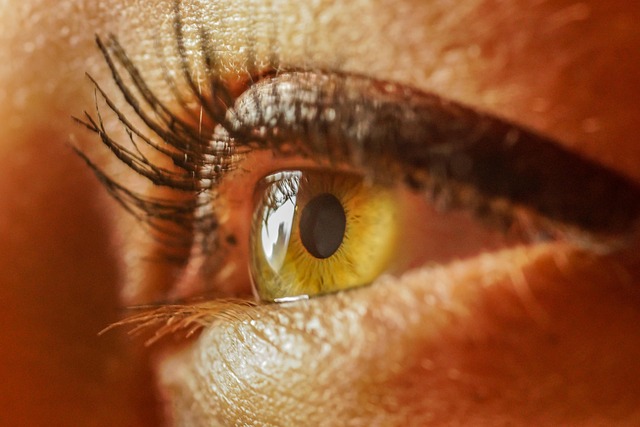Warts, caused by HPV, are common skin growths with various types and risk factors. Traditional Dermatologist wart removal methods like cryotherapy and surgery are time-consuming and may cause discomfort. Modern alternatives, including topical medications, laser therapy, and heat treatment, offer faster, more comfortable solutions with minimal downtime. Proper post-care after successful Dermatologist wart removal is crucial for healing and preventing future warts. Maintaining good hygiene, a balanced diet, and regular exercise also strengthen the immune system against wart-causing viruses.
Looking for a swift and simple way to bid farewell to unsightly warts? This comprehensive guide explores effective dermatologist wart removal methods with minimal downtime. We delve into the causes of these common skin growths, traditional treatments, and modern techniques like cryotherapy and laser therapy. Learn essential post-removal care tips and preventive measures to keep warts at bay. Discover how you can achieve smooth, wart-free skin quickly and easily with professional care.
- Understanding Warts and Their Causes
- Traditional Dermatologist Wart Removal Methods
- Modern, Quick, and Easy Techniques for Wart Elimination
- Post-Removal Care and Preventive Measures
Understanding Warts and Their Causes
Warts are small, rough growths that can appear anywhere on your skin, caused by the human papillomavirus (HPV). They are generally harmless but can be unsightly and uncomfortable, prompting many to seek dermatologist wart removal solutions. Understanding their causes is key to effective treatment. HPV infects the top layer of skin, leading to the formation of these growths. Different types of warts include common warts, which often appear on the hands and feet, and genital warts, specific to intimate areas.
Various factors can increase the risk of developing warts, including weakened immune systems, frequent hand contact with contaminated surfaces, and skin-to-skin transmission. Certain conditions like diabetes or poor circulation may also make it easier for HPV to take hold. Knowing these causes empowers individuals to take preventive measures, such as maintaining good hygiene, avoiding touching public surfaces, and keeping the skin healthy and robust.
Traditional Dermatologist Wart Removal Methods
Traditional dermatologist wart removal methods often involve time-consuming procedures and can lead to a significant downtime for patients. The most common approach is cryotherapy, where extreme cold is used to freeze and destroy the wart. While effective, this process may require multiple treatments spaced weeks apart, causing discomfort and potential side effects like skin irritation. Another traditional method is surgical excision, where a dermatologist cuts out the wart, often with a scalpel or laser. This method is quick but can result in scarring and requires a longer recovery period.
These conventional treatments not only take up valuable time but also carry a higher risk of complications compared to modern, advanced techniques. As such, many patients are now seeking alternative solutions that offer swift and easy wart removal with minimal, if any, downtime. Modern approaches like topical medications, laser therapy, and heat treatment have emerged as game-changers in dermatologist wart removal, providing effective and convenient alternatives to traditional methods.
Modern, Quick, and Easy Techniques for Wart Elimination
In today’s world, dermatologist wart removal has evolved to include modern, quick, and easy techniques that offer significant advantages over traditional methods. These advanced approaches prioritize patient comfort and efficiency, ensuring minimal downtime for those seeking relief from warts. One prominent method involves the use of topical treatments, such as salicylic acid or immunomodulators, which can swiftly dissolve warts without invasive procedures.
Laser therapy has also emerged as a game-changer in dermatologist wart removal, providing precise targeting and rapid results. This non-surgical approach not only eliminates warts but also minimizes scarring and post-treatment discomfort. Furthermore, cryotherapy, or freezing warts with liquid nitrogen, offers another fast and effective solution, making it a popular choice for many dermatologists and their patients alike.
Post-Removal Care and Preventive Measures
After a successful dermatologist wart removal procedure, proper post-care is essential for optimal healing and to prevent future warts. It’s crucial to keep the treated area clean and dry, avoiding excessive scratching or touching. A gentle, pH-balanced cleanser and cool compresses can aid in soothing the skin while keeping it free from infections. Applying a recommended topical antibiotic cream can also help ward off potential bacterial infections and promote faster healing.
To prevent recurring warts, maintain good hygiene practices by regularly washing your hands with soap and water, especially after touching public surfaces or before eating. Avoid direct contact with warts on others and keep common areas like pool decks and gym showers clean. Using protective bandages or gloves when necessary can also reduce the risk of transmission. Additionally, strengthening your immune system through a balanced diet and regular exercise can make your body more resistant to wart-causing viruses.
In conclusion, dermatologist wart removal has evolved significantly, offering modern and quick techniques with minimal downtime. Understanding the causes of warts and adopting effective preventive measures are crucial steps. From traditional methods to cutting-edge treatments, today’s options ensure efficient wart elimination. Remember that post-removal care is essential for optimal results and future protection against these common skin growths.
